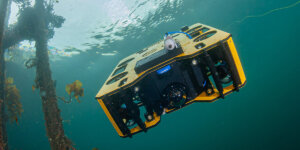
IMAGE/NISHANT TRIPATHI.
As COVID-19 continues to spread across the United States, social distancing measures are being eased in countries including Germany and China. However, many still expect periods of resurgence of coronavirus cases, particularly as public life resumes.
According to Nature, scientists across the globe have begun analyzing wastewater for the new coronavirus as a way to estimate infections in the community, given that most people will never be tested. The coronavirus or SARS-CoV-2 can shed into fecal matter, even if infected individuals are asymptomatic. Thus, wastewater can provide an early clue as to community spread.
Adam Smith, associate professor in the Sonny Astani Department of Civil and Environmental Engineering, and his research group are among those looking into wastewater samples. Partnering with three other universities, including Howard University, North Carolina State University and Rice University, the researchers received $200,000 from the NSF RAPID fund to do wastewater-based surveillance of SARS-CoV-2 as a community scale indicator of infection rates. Ultimately, the researchers hope to also collaborate with local public health departments, including the Los Angeles Public Health Department, to help prepare local communities for new outbreaks.
The virus, Smith said, which primarily causes respiratory tract infections, can also infect the gastrointestinal tract. A lot of those who haven’t been tested or who are asymptomatic could still be shedding the virus and thus it could provide further information on how the virus is spreading and also help warn about deviations from the baseline.
“The goal isn’t to identify an actual number of infections in the community,” Smith said, “but instead correlate the wastewater data to clinical data and provide complimentary intel. As social distancing is relaxed, an increase in viral RNA in wastewater could help serve as an early warning that community spread is increasing once again.”
The fraction of infected individuals who shed the virus in feces has been reported in the range of 30-60%, Smith said, and the positive detection through feces can persist longer than in a respiratory sample, sometimes up to 47 days. Viral shedding in feces means the virus will likely be in municipal wastewater collection systems, an idea that has been confirmed by scientists in the United States, the Netherlands and Sweden.
Among their goals, the research team hopes to also study the presence of other viruses, such as the seasonal influenza, and compare infection dynamics with SARS-CoV-2. They will also analyze wastewater samples for an enteric virus, to serve as a positive control and help make comparisons across studies.
The team includes Francis de los Reyes, professor at NC State University; Lauren Stadler, assistant professor at Rice University; Jeseth Delgado Vela, assistant professor at Howard University; and Nadine Kotlarz, postdoctoral scholar at NC State University. They will look at wastewater samples from treatment plants in Houston, Raleigh, Los Angeles and the Washington, D.C. metro area.
Viral Detection in Wastewater
The idea that monitoring viral concentration in wastewater can allow for early detection of outbreaks relies on the idea that the viral signal is stable in wastewater as it travels through the collection system. The researchers will evaluate this idea in Raleigh by collecting wastewater samples at key locations within the collection system.
Starting April 6, the researchers began gathering raw wastewater samples and primary solids samples twice weekly at each of the plants engaged in the study. They plan to continue to do so for at least 12 weeks to capture before, during and after peak infection data. The team will estimate the prevalence of COVID-19, the disease caused by SARS-CoV-2, in the communities served by the four wastewater systems in the study using clinical data on the number of COVID-19 cases and the number of people served by each wastewater plant.
Creating a Public Database to Predict Outbreaks
As the COVID-19 crisis enters its next phase, it will be important to create a timely and geographically broad dataset that helps scientists understand its spread, Smith said. The researchers seek to work with local public health departments to help prepare them for future outbreaks by prioritizing diagnostic testing and other resources for areas experiencing high community spread based on the wastewater monitoring data. The researchers plan to make their data publicly available and hope it will contribute to a global database.
“Lots of different academics and utilities are playing a role. It’s great that we’re coming together as a community of engineers to play whatever role we can to help in the current pandemic,” Smith said.
This project is funded by the National Science Foundation RAPID program.
Published on May 28th, 2020
Last updated on June 4th, 2020











